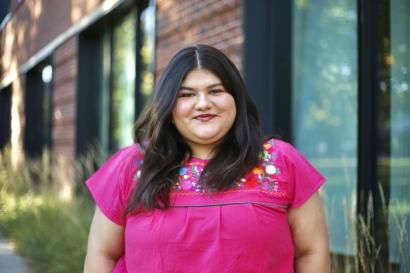One of the biggest challenges since studying abroad, perhaps unsurprisingly, has been adjusting to the food. Not just the cuisine, but the entire culture that surrounds eating and going out to restaurants in Spain can be overwhelming for a foreigner. Below you’ll find some of the most important tips surrounding what and how to eat like a local in Madrid.
1. La Comida
Comida means “food” in Spanish, but “la comida” also refers to lunch, the largest meal of the day in Spain. Traditionally, the midday meal usually consists of multiple courses, and is eaten leisurely over the course of a long lunch break. All shops close from around 1:30-4:30, and Spaniards traditionally have a 2-3 hour break from work or school to enjoy a long lunch (and sometimes a “siesta”). Breakfast in Spain is small, and more of an afterthought (if eaten at all). It usually consists of toast, coffee, or maybe a pastry. And of course, Spaniards famously eat a very late dinner, generally around 9-11pm. As someone who thinks of breakfast as the best meal of the day, and tends to forget about lunch entirely, this all came as quite a substantial adjustment. The classic American breakfast of foods like eggs, bacon, pancakes, waffles, and cereal is sadly missing from Spanish cuisine. As an American, it can also be difficult when you find yourself hungry around 6-7pm (a traditional dinner time in the U.S.) and you have to wait another three hours for most restaurants to reopen.
2. Menú Del Día
“Menu of the Day” is not unheard of in the U.S., but in Madrid it is a very common practice offered by almost every restaurant (usually for lunch). From a shortened menu, you select a drink, a first course, second course, and dessert. These are usually a great deal, and you can get a lot of food for only 10-12 Euros. If you’re sitting down for a proper meal where you can afford to take your time, I always recommend choosing the Menu of the Day.
3. Tapas
In recent years, tapas have become popular in some places in the U.S., but it’s important to note that they are quite different from what actual tapas look like in Spain. Tapas are snacks or small appetizers that come free with every round of drinks (in most bars, varying depending on the city). Sometimes they are olives, chips, or croquettes (dumplings of deep-fried mashed potato and ham mixture). A “good” tapas place gives larger portions of dishes like patatas bravas (fried potato wedges with spicy garlic tomato sauce), tortilla española (omelette with potatoes), huevos rotos (fried eggs), chorizo, calamari, etcetera. “Going out for drinks and tapas” is a common activity to catch up with friends. And since dinner is a smaller meal, oftentimes drinks and tapas will replace a more traditional “full” meal.
You can also order what’s called “raciones” (“snacks,” in english). These are larger portions than tapas, but the idea is similar: get a few smaller plates of food, and share among the table.
(In Spanish, “tapa” means “lid”. It’s believed that the tradition of tapas originated many years ago, when bartenders would serve wine covered with saucers in order to keep out flies. They soon realized they could use the saucer to serve a bit of cheese, ham, or olives. This practice was met with enthusiasm by customers, and eventually became a widespread custom.)
4. Sobremesa
“Sobremesa,” literally meaning “over the table,” refers to the tradition of taking time to leisurely eat and enjoy meals. In Spain, it's common to eat slowly and spend time talking with friends, remaining in the restaurant for a while even after you’re done eating. This is in stark contrast to the U.S., where waiters will often try to usher you out with the check if you stay too long. Restaurants are eager to turn over tables and get more business, so lingering too long can be viewed as inconsiderate. However, this fast-paced, business-first mindset does not apply in Spain. If anything, it can be considered hasty or presumptuous to bother the waiter for the check too quickly. No matter how long my friends and I linger at a restaurant (which sometimes can be a few hours), we have never been brought the check before asking for it.
5. Al Aire Libre (Outdoors)
An important part of the culture that you’ll notice when visiting Spain, is that Madrileños love to spend time outdoors. Naturally, this carries over into meal times. The weather is warm and pleasant for most of the year, and during the summer it is still light outside until 10pm. Nearly every single restaurant has some degree of outdoor seating available, and it’s always the more popular choice. Since being in Spain, I think I’ve eaten indoors a total of three or four times (of course, this is changing as the weather cools down). There are plazas everywhere, full of tables that fill up with people around meal times. Full of joy and the epitome of the Spanish lifestyle, these plazas are some of my favorite places to sit and relax. There’s usually a nice fountain, tons of greenery, kids running around playing, and people singing or performing live music. Even outside of the plazas, tables line the sidewalks outside every cafe, tapas restaurant, or cerveceria.
6. Vegetarian Abroad
About a year ago, I decided to go vegetarian. In preparing to come to Spain, I thought a lot about how well I would be able to uphold my diet. About a week into living here, I realized it would be much easier to temporarily practice a pescatarian diet. As I imagined, including fish and seafood in my diet has made dining out much more feasible and enjoyable. Although Madrid does boast the world’s first ever 100% vegetarian Burger King, it’s not the most vegetarian-friendly place. The Spanish diet focuses heavily on bread, potatoes, olive oil, and, most importantly, meat (especially chorizo and jamón). Unless you’re cooking most of your own meals, I’ve found that it’s much harder to avoid meat than it is in the states.
Additionally, many restaurants in Madrid have a different definition of “vegetarian." I learned this the first time I ordered a “vegetarian sandwich”... that came with tuna. Since “vegetarian” here often means “pescatarian” you have to be especially prepared if you plan on coming to Spain on a vegetarian diet.
7. Spices and Lack Thereof
The food in Spain is made with ingredients that are fresh and high quality. Most of the grocery stores are small markets, and Spainarids like to eat food that’s in season. However, despite some widely popular dishes (such as paella and jamon serrano) it’s not uncommon to hear Spanish food described by foreigners as “bland." Most Spanish cooking generally involves very few ingredients and very few spices. Sandwiches (“bocadillos," in Madrid), generally just have meat and bread, meaning they can be quite dry. The same is true with chicken wings. They’re usually just plain cooked chicken—none of the buffalo, honey mustard, barbeque, sweet chili, ranch, etcetera, sauces that Americans know and love. If you’re used to eating spicy foods, or generally have a sweet tooth/salt cravings, you may find something lacking with the food in Spain. Many of my friends carry around sriracha or other condiments that they picked up at an ethnic food shop. (Yesterday my friend whipped some ketchup and salt packets out of her fanny pack after we sat down for lunch.) Once again, however, the food is still tasty, even if it takes a bit of adjusting. And if traditional Spanish food isn’t to your taste, Madrid is a massive city with tons of other ethnic restaurants and cuisines to try.
Regardless of where you go, navigating food and restaurant culture can be one of the most intimidating parts about studying abroad. And of course there are times when I find myself missing American food—pancakes, cereal, peanut butter, mac and cheese, NY pizza, anything at an Americana diner….). But since being in Spain, I’ve discovered that the importance of food is not just about what you eat, but how you eat, and the critical role that it plays in your everyday life. In Spain, meals are relaxed, leisurely, joyful, and with friends and family. The focus is on the experience—eating dinner in an outdoor plaza as the sun sets, or grabbing drinks and tapas at a bar before going out. Adapting and exploring this new culture has helped me reevaluate how I view food, and the way it impacts my life, relationships, and quality time spent with those around me.

Kyla Hunter
<p>Hello! My name is Kyla Hunter and I am a rising junior at Duke University studying Mechanical Engineering, with a focus on Energy & Environment. Although I was born in Princeton, New Jersey, bouncing around between different states as a child was the beginning of my interest in exploring new settings and meeting new people. I have long dreamed of studying abroad and am thrilled to be participating in the IES - Engineering, Math & Science Program in Madrid this fall. On campus, I am a Residential Assistant for first-year students and a tour guide for the School of Engineering. In my free time, I can often be found drawing in my sketchbook or playing the piano in the common room. I look forward to sharing some of my experiences as I navigate new cultural, social, and academic endeavors in Spain!</p>









